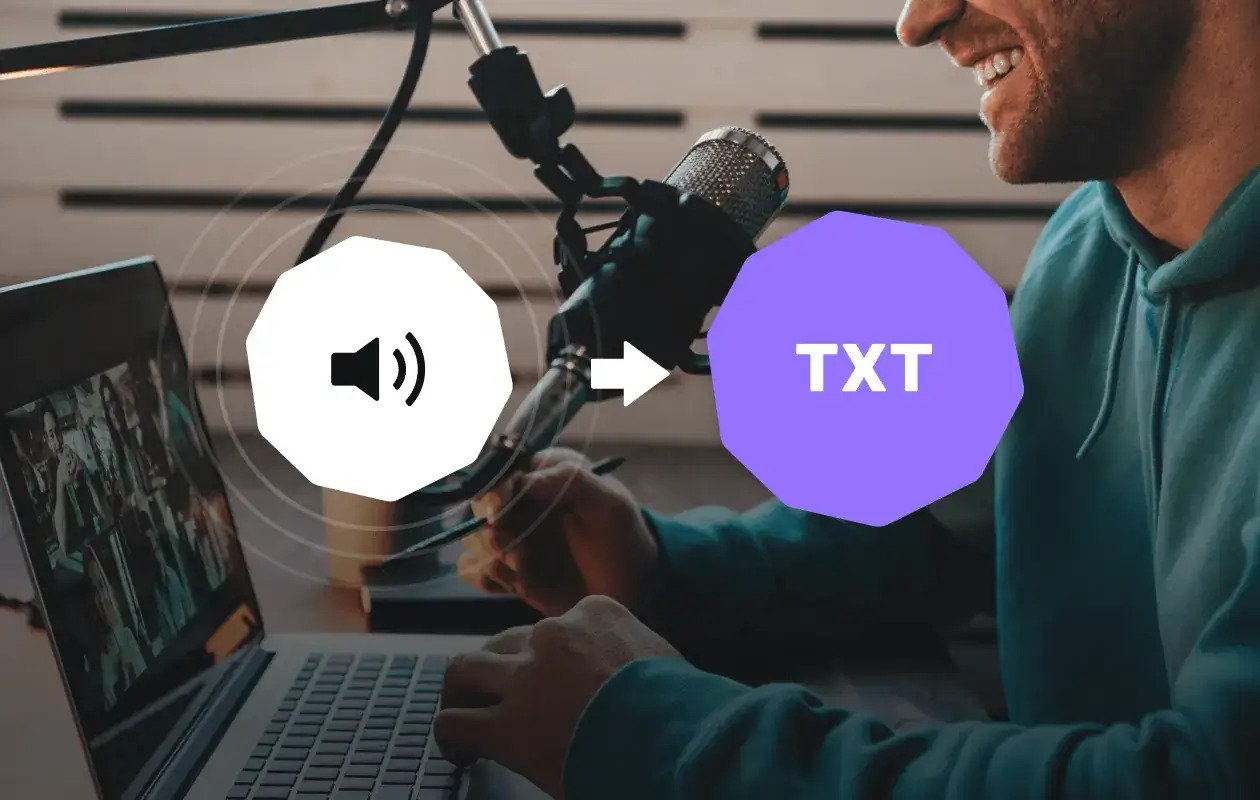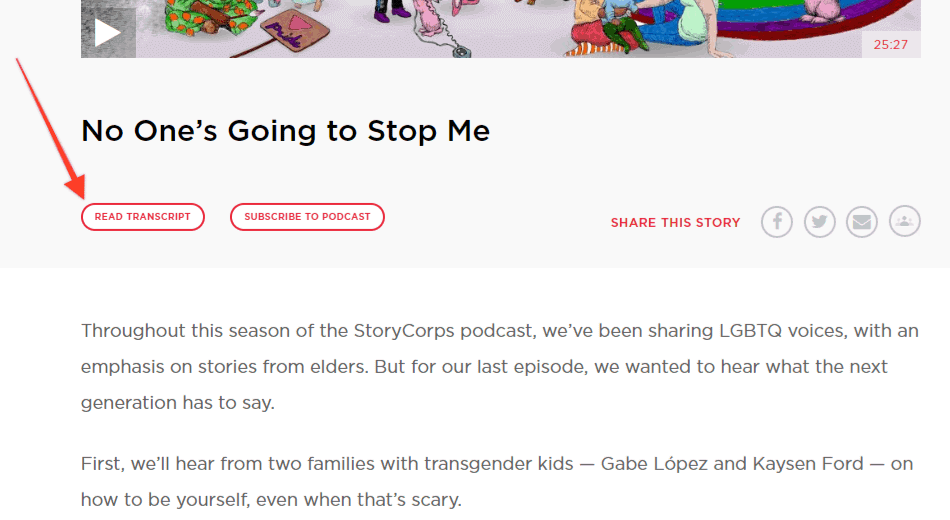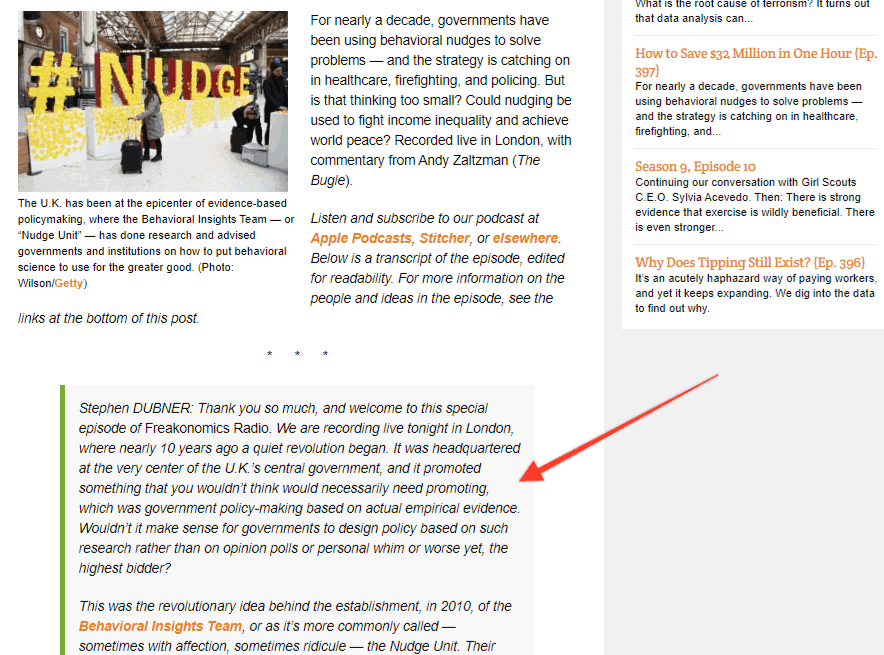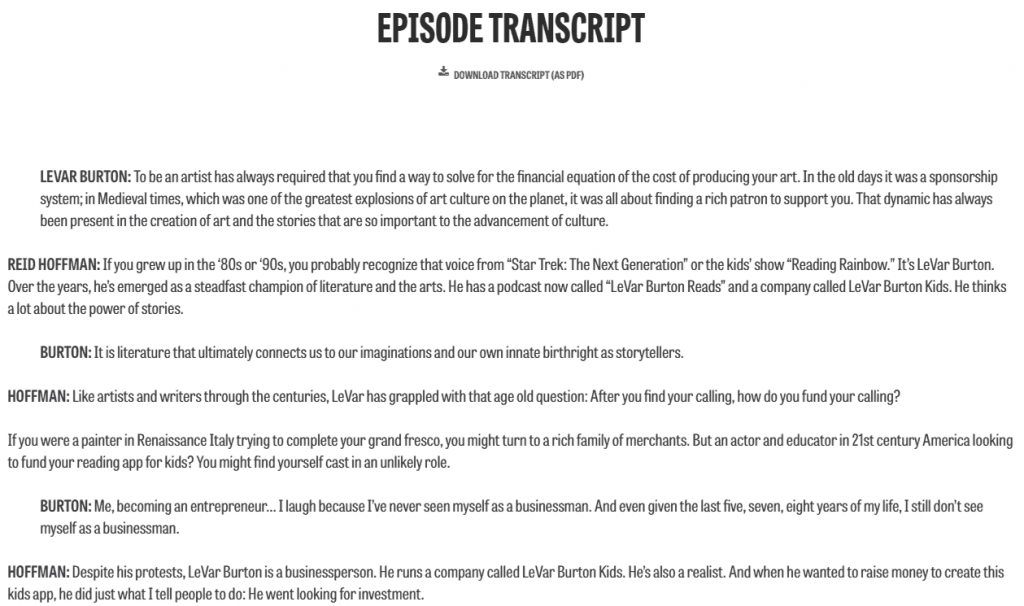

Why & How to Create a Podcast Transcript
As a podcaster, you will most definitely want your content reached by as many people as possible. One of the most effective ways to achieve this is to create a podcast transcription. Even if your podcasts are available on dozens of audio platforms, you’re losing out on an enormous number of listeners by not providing transcripts.
Undoubtedly, transcripts take some effort and time to create and edit, but they are extremely useful for you and your audience. Producing inclusive and accessible content demonstrates your commitment to and concern for your audience.
Below is all you need to know about what transcripts are, why you need them, and how to get podcast transcripts, so dive in!
What Is a Transcript for a Podcast?
A transcript is a written, word-for-word account of everything that is being said during an episode. Typically, it’s done in the following way: You, podcast transcription software, or an expert from a professional transcription company listens to the podcast and notes down every word said by you or your guests.
Although you cannot publish your transcriptions on major podcast directories like Google Play, Spotify, and Apple Podcasts, you can make them available on your own podcast website or blog. And if you’d like to go the extra mile, you can add timestamps so that readers can jump immediately to specific parts of the episode.
Here are some great podcast transcription examples:
1. StoryCorps

2. Freakonomics Radio

3. Masters of Scale

Why Convert Podcast to Text If Podcasts Are Meant for Listening?
Listeners with partial or complete hearing loss can benefit greatly from transcripts. It enables them to enjoy your content even if they can’t hear it. The other useful function of podcast transcripts is the possibility for listeners to refer back to what you said at a specific moment in time.
Remember, summaries and show notes from podcasts should not be substituted with transcripts. It is not recommended to use them interchangeably either because each has its own distinct function.
5 Benefits of Creating a Transcript of Podcast
There are numerous benefits to creating transcripts. The following are just some of the key reasons why transcripts should become a part of your usual podcasting routine.
1. Transcripts Help Boost Your Reach
Your success as a podcast creator depends on your ability to reach as many people as you can with your content. Even though podcast closed captioning and alt tags are helpful, nothing makes your material more accessible than a transcript.
By offering transcripts of every episode, you can not only increase brand visibility but also extend your reach. The reason is simple — the more people read or listen to your podcast, the more popular it will be, and the more opportunity you will have to take it to the next level.
2. Transcripts Help Increase Accessibility
As was already mentioned, transcripts are essential for increasing the accessibility of your information. The thing is, they can help you reach an audience that you might not have even considered. When you transcribe podcast audio to text, you give someone with partial or total hearing loss a chance to enjoy your podcast.
Transcripts can also help your audience quickly browse through and understand the content of a specific episode.
3. Transcripts Maximize Your SEO
SEO is a steady process that takes time and does not happen overnight. There are countless ways for you as a podcaster to boost the SEO of your content, including keyword research, outreach, and backlinks.
Creating transcripts is another approach to improve SEO. However, keep in mind that podcast transcripts alone cannot ensure immediate success. They should be combined with detailed show notes for maximum efficacy.
4. Transcripts Help Improve Your Speaking Skills
Podcast transcripts are a fantastic tool to hone and polish your speaking skills. They can not only help rid your content of filler words (e.g., ‘like,’ ‘you know,’ ‘so’) but also decide if you’re communicating your intended message and building up to a climax.
By getting into the habit of analyzing your transcripts, you can easily identify what you need to improve upon to offer better content to your listeners.
5. Transcripts Create Content You Can Repurpose
A transcription of podcast is a valuable source of content you can repurpose at a later time. For example, it can serve as a basis for your social media posts, email marketing campaigns, and even infographics. Many podcast creators also utilize the transcriptions of their episodes as sources for blog posts.
Podcast Transcription Formats
There are two main podcast transcript formats: manual and automatic.
A manual transcription means someone listens to the podcast and types out what is said. This method is accurate but takes a lot of time. In contrast, an automatic transcript for podcast uses a tool to quickly turn speech into text. While it’s faster, it might need extra editing to ensure accuracy.
Manual transcripts often have timestamps and speaker labels, which makes them easier to read and more useful. Meanwhile, AI transcription tools are getting better, with features like real-time transcription and integration with podcast platforms.
Choosing the right transcription format depends on how accurate you need it to be and what resources you have.
How to Transcribe a Podcast?
Transcripts for podcasts can be created in a variety of ways. Some podcast creators choose self-writing, while others rely on transcript generation software or outsource this task to professionals.
Let’s see how to make a podcast transcript for Spotify.
Method 1: Using the Spotify App
You can access transcriptions directly in the Spotify app, but only if you are a podcast publisher. Here’s how to do it:
- Log into Spotify for Podcasters.
- Go to ‘Episodes.’
- Choose the episode you want a transcription for.
- Under the episode preview, click the button that says ‘transcripts,’ then click ‘view.’
Method 2: Manually Transcribe Spotify Podcast
Transcribing a Spotify podcast manually means you’ll listen to the episode and write down every word. This ensures a pretty good level of accuracy, but it can take much time to accomplish. Here’s how to do it using any word processing program, like Google Docs or Microsoft Word:
- Start by creating a new blank document in the program of your choice.
- Open the podcast episode you want to transcribe in either the Spotify web player or desktop app.
- Hit play to start listening. You can adjust the playback speed to help you keep up—setting it to 0.7x usually works well, but you can go as slow as 0.5x if needed.
- Begin typing everything you hear in your document. Remember to pause frequently to capture all the details, and make sure to note the time and the names of the speakers. By the end of the episode, you should have a complete transcript ready.
Method 3: Using a Podcast Transcript Generator
Using automated software (e.g., Notta) is a smart move since many specialized platforms provide free trials. Here the whole work is done automatically by speech-to-text technology so that accuracy will be far from 100%. However, it will take you far less time to fix errors than to write everything from scratch.
To transcribe a podcast using specialized software, you will have to get a copy of the podcast first. You can use Spotify Premium to download episodes, but they’re encrypted. A good alternative is Listen Notes, a third-party service that lets you capture the audio you need. Here’s how to easily download any podcast episode:
- Go to the Listen Notes website, which has a wide range of podcasts from different creators. Use the search bar to type in the name of the podcast and press enter. Then, click on the podcast you want from the list.
- Choose the episode you want to download. Look for a three-dot icon next to the play button and click it for more options.
- Select ‘download audio’ to save the MP3 file to your device.
Method 4: Hiring Professionals to Transcribe Podcast to Text
This option always comes at a cost, but it’s often the best investment, especially if you’re not a pro at keyboarding. By outsourcing your transcription needs to a professional typing agency, you save the worry and get 99.9% accurate podcast content quickly and hassle-free.
Experienced transcribers can do all the hard work for you in as little as 6 hours. You simply share a link to your podcast, get its written version at a stipulated time, then look through it to ensure everything’s there and it’s ready to be posted.
Final Thoughts
Adding transcripts to your episodes is highly beneficial for both your audience and you as a podcast creator. No matter whether you choose to generate your transcripts manually or delegate this task to a professional podcast notes and transcription service, always make sure that you have a readable form of the content published on your podcast website or blog.
At Typing Service, we have a dedicated QA team that checks every transcribed podcast for quality, so you can rest assured you’ll get nothing short of perfect.


